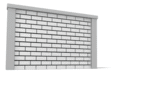 The dictionary definition of resilience is “something that is capable of returning to its original shape after being stretched, bent or otherwise deformed“.
The dictionary definition of resilience is “something that is capable of returning to its original shape after being stretched, bent or otherwise deformed“.
The term is applied to inanimate objects, to people and to systems.
A rubber ball is resilient … it is that physical property that gives it bounce.
A person is described as resilient if they are able to cope with stress without being psychologically deformed in the process. Emotional resilience is regarded as an asset.
Systems are described as resilient when they are able to cope with variation without failing. And this use of the term is associated with another concept: strength.
Strong things can withstand a lot of force before they break. Strength is not the same as resilience.
Engineers use another term – strain – which means the amount of deformation that happens when a force is applied.
Stress is the force applied, strain is the deformation that results.
So someone who is strong and resilient will not buckle under high pressure and will absorb variation – like the suspension of you car.
But is strength-and-resilience always an asset?
Suppose some strong and resilient people finds themselves in a relentlessly changing context … one in which they actually need to adapt and evolve to survive in the long term.
How well does their highly valued strength-and-resilience asset serve them?
Not very well.
They will resist the change – they are resilient – and they will resist it for a long time – they are strong.
But the change is relentless and eventually the limit of their strength will be reached … and they snap!
And when that happens all the stored energy is suddenly released. So they do not just snap – they explode!
Just like the wall in the animation above.
The final straw that triggers the sudden failure may appear insignificant … and at any other time it would be.
But when the pressure is really on and the system is at the limit then it can be just enough to trigger the catastrophic failure from which there is no return.
Social systems behave in exactly the same way.
Those that have demonstrated durability are both strong and resilient – but in a relentlessly changing context even they will fail eventually, and when they do the collapse is sudden and catastrophic.
Structural engineers know that catastrophic failure usually starts as a localised failure and spreads rapidly through the hyper-stressed structure; each part failing in sequence as it becomes exposed and exceeds the limit of its strength. That is how the strong and resilient Twin Towers failed and fell on Sept 11th 2001. They were not knocked over. They were weakened to the point of catastrophic failure.
When systems are exposed to varying strains then these localised micro-fractures only occur at the peaks of stress and may not have time to spread very far. The damage is done though. The system is a bit weaker than it was before. And catastrophic failure is more likely in the future.
That is what caused the sudden loss of some of the first jet airliners which inexplicably just fell out of the sky on otherwise uneventful flights. It took a long time for the root cause to be uncovered … the square windows.
Jet airliners fly at high altitude because it allows higher speeds and requires less fuel and so allows long distance flight over wide oceans, steppes, deserts and icecaps. But the air pressure is low at high altitude and passengers could not tolerate that; so the air pressure inside an airliner at high altitude is much higher than outside. It is a huge pressurised metal flying cannister. And as it goes up and down the thin metal skin is exposed to high variations in stress which a metal tube can actually handle rather well … until we punch holes in it to fit windows to allow our passengers a nice view of the clouds outside. We are used to square windows in our houses (because they are easier to make) so the original aircraft engineers naturally put square windows in the early airliners. And that is where the problem arose … the corners of the windows concentrate the stress and over time, with enough take-offs and landings, the metal skin at the corners of the windows will accumulate invisible micro-fractures. The metal actually fatigues. Then one day – pop – a single rivet at the corner of a square window fails and triggers the catastrophic failure of the whole structure. But the aircraft designers did not understand that process and it took quite a long time to diagnose the root cause.
The solution?
A more resilient design – use round-cornered windows that dissipate the strain rather than concentrate it. It was that simple!
So what is the equivalent resilient design for social system? Adaptability.
But how it is possible for a system to be strong, resilient and adaptable?
The design trick is to install “emotional strain gauges” that indicate when and where the internal cultural stress is being concentrated and where the emotional strain shows first.
These emotometers will alert us to where the stresses and strains are being felt strongest and most often – rather like pain detectors. We use the patterns of information from our network of emotometers to help us focus our re-design attention to continuously adapt parts of our system to relieve the strain and to reduce the system wide risk of catastrophic failure.
And by installing emotometers across our system we will move towards a design that is strong, resilient and that continuously adapts to a changing environment.
It really is that simple.
Welcome to complex adaptive systems engineering (CASE).
